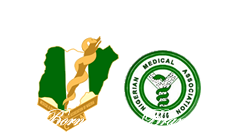|
CAREER ASPIRATIONS OF MEDICAL STUDENTS AND MEDICAL INTERNS IN GHANA. IS THERE A DIFFERENCE? |
|
| Yifieyeh AC, Duduyemi BM, Kumahor E, Kotoku E, Moses MO, Fefemwole P, Akwetey FM | |
|
Background: Understanding the reasons for the selection of medical specialties by medical graduates is necessary for policy formulation and targeted mentoring to prevent a skewing of the lean resources and maximize the improving doctor to patient ratio in Ghana. This is particularly so due to an increase in the desire for specialization among medical graduates since the establishment of the Ghana College of Physicians and Surgeons.
Methodology: A cross-sectional study was designed. To consenting first and final year clinical students of the School of Medical Sciences, Kwame Nkrumah University of Science and Technology, Kumasi, Ghana and first and second year medical interns at Komfo Anokye Teaching Hospital and Sunyani Regional Hospital respectively were administered semi – structured questionnaires. Data were analysed with SPSS version 24 and result put in tables and graphs Result: Three hundred and forty and 100 questionnaires were administered to students and interns with 92% and 75% responders’ rate respectively. The M: F ratio for students and interns were 1.23:1 and 1.34:1 respectively. Postgraduate specialization and additional qualification were desired by all categories irrespective of sex, financial or family consideration. Surgery (43.9% students; 33.3% interns) and Internal Medicine (23.8% students; 24% interns) were the 2 most popular choices. Conclusion: While Surgery and Internal Medicine appeared to be the favoured choices by our students and interns, deliberate effort through mentoring is required to avert lop-sidedness in workforce in our hospitals. |
|

